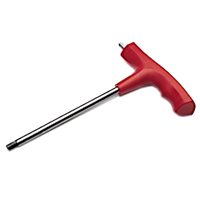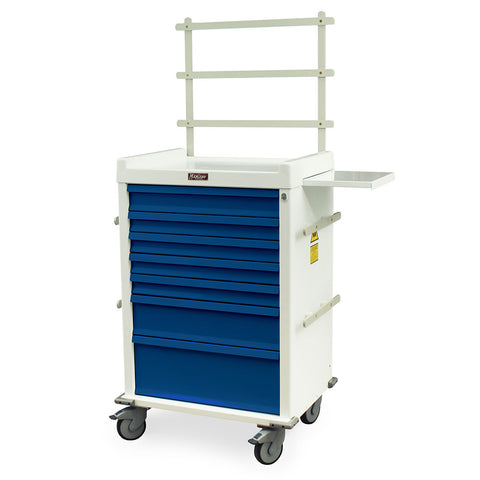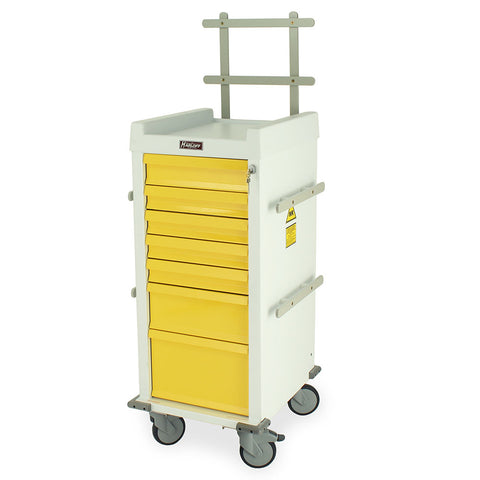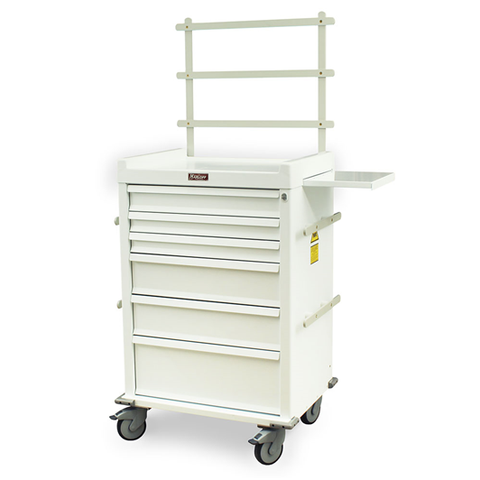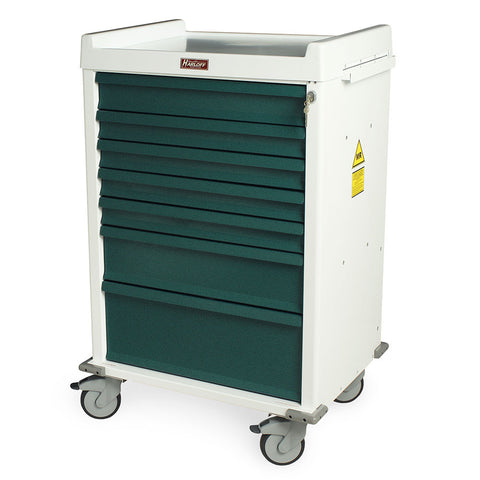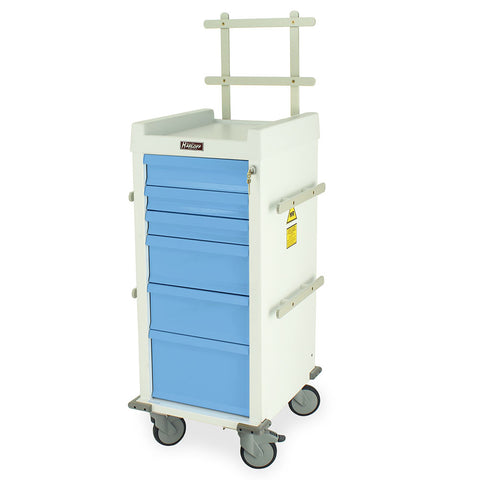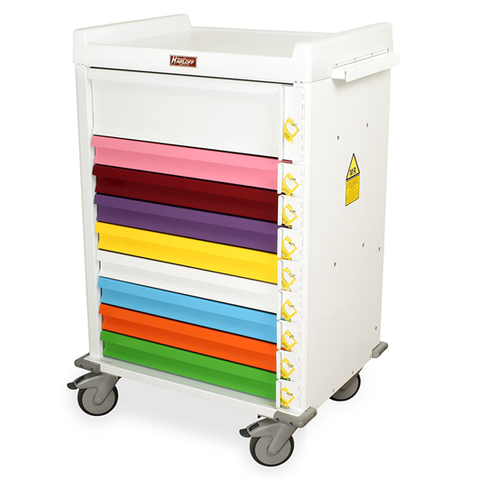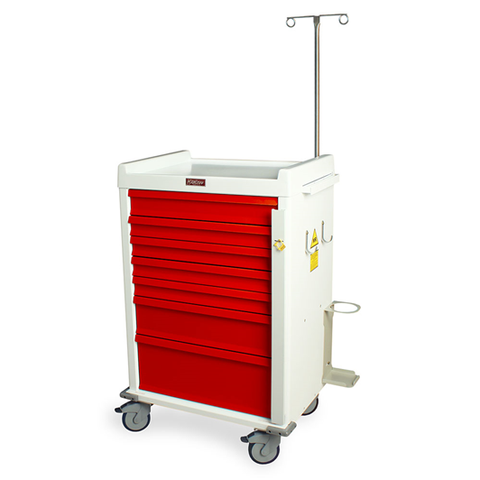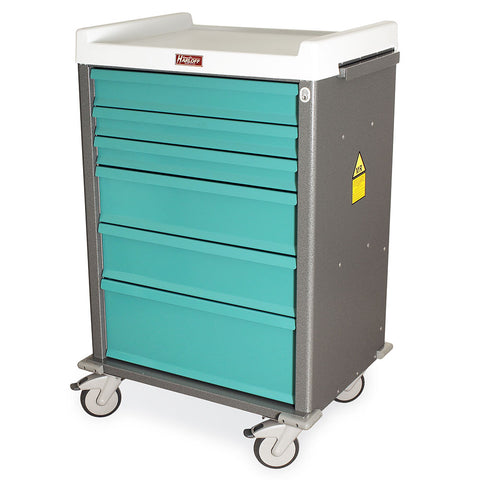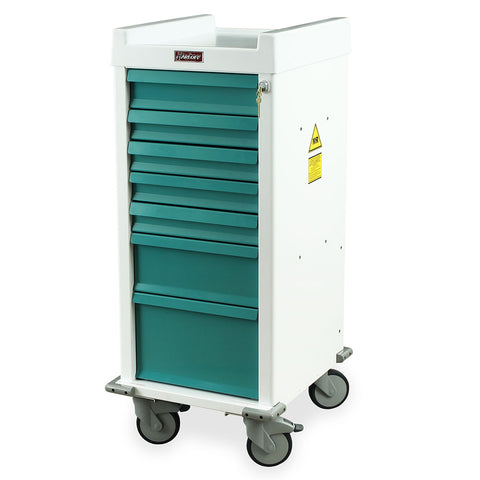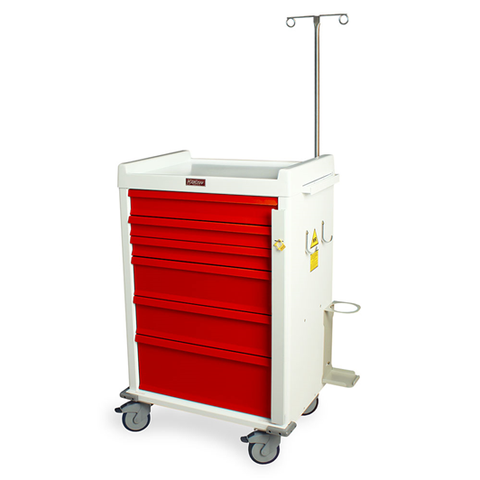Maintaining MRI-Conditional stretchers is critical for patient safety, operational efficiency, and long-term cost savings. Hospitals, imaging centers, and outpatient clinics rely on these stretchers to safely transport patients in MRI suites without disrupting imaging or causing accidents. Unlike standard stretchers, MRI-Conditional stretchers are designed using non-magnetic materials and tested under strict ASTM F2503 standards. Proper maintenance ensures they remain MR Conditional and continue to function safely in MRI environments.
Whether you use the MRI Med Adjustable Height Stretcher or the Non-Ferrous Height Adjustable Stretcher, following a structured maintenance plan preserves safety, prevents costly repairs, and prolongs the life of the equipment. This guide provides step-by-step practices, from daily cleaning to annual inspections, highlighting the unique care needs of MRI-Conditional stretchers.
Introduction to MRI Stretcher Maintenance
Why Proper Maintenance Is Critical
MRI-Conditional stretchers are exposed to high magnetic fields, frequent patient transfers, and rigorous daily use. Without proper care, wear and tear can compromise safety, reduce maneuverability, or even create hazards in MRI suites. Maintenance is not just about longevity, but about keeping the stretcher compliant with MRI safety standards.
Failing to maintain non-magnetic wheels, locking mechanisms, or padding can lead to unexpected accidents or interfere with scan quality. Routine care ensures the stretcher continues to meet MR Conditional labeling requirements.
Overview of MRI-Conditional Stretchers and Their Materials
MRI stretchers are made of non-ferrous materials like aluminum, PVC, and specialty alloys. The MRI Med Non-Ferrous Height Adjustable Stretcher features durable, non-magnetic frames, allowing safe use in MRI environments. Accessories such as IV poles, rails, and restraint straps are also designed to prevent magnetic interaction.
These materials, while strong, require routine inspection for cracks, stress points, and fastener integrity. Only well-maintained stretchers preserve MR Conditional compliance.
Common Maintenance Mistakes to Avoid
Many facilities make the mistake of treating MRI-Conditional stretchers like standard stretchers. Common errors include:
-
Using standard cleaning chemicals that can damage non-magnetic plastics or padding.
-
Neglecting wheel and brake inspections, which can lead to sudden failures during patient transfers.
-
Ignoring manufacturer guidelines, which may void ASTM compliance.
Following structured maintenance protocols prevents these issues and ensures your MRI stretchers remain safe and functional.
Daily Maintenance Practices for MRI-Conditional Stretchers
Cleaning and Disinfection Protocols
Daily cleaning is crucial for infection control. MRI-Conditional stretchers should be wiped down with non-abrasive, MRI-safe disinfectants. Avoid products containing metal particles or harsh chemicals that can damage non-magnetic components.
The MRI Med Adjustable Height Stretcher features wipeable padding and non-metallic surfaces, making it easy to clean without compromising MR Conditional compliance. Focus on rails, straps, and padding surfaces, ensuring no residue or dirt remains.
Inspecting Wheels, Casters, and Brakes
Wheels and casters are critical for safe patient movement. Inspect them daily for wear, alignment issues, and locking functionality. Non-magnetic wheels on the MRI Med Stretcher reduce magnetic interaction, but still require routine lubrication with MRI-conditional lubricants and checks for debris accumulation.
Checking Padding, Rails, and Adjustable Components
Adjustable height mechanisms, rails, and patient restraint systems should be operated daily to ensure smooth motion. Verify that padding is intact, straps are secure, and bolts are tight. Early detection of wear prevents mechanical failure and preserves patient comfort and safety.
Weekly and Monthly Maintenance Checks
Testing Weight Capacity and Stability
Every week, stretchers should be tested for weight stability. Verify that height-adjustment systems, brakes, and wheels support the full rated patient weight. Products like the MRI Med Non-Ferrous Height Adjustable Stretcher have clear weight capacity ratings; testing ensures these limits are maintained.
Verifying MR Conditional Labels and Documentation
Monthly checks should include reviewing the MR Conditional labeling, documentation, and manufacturer’s instructions. Ensure the stretcher is still compliant with ASTM F2503 standards and that all staff have access to operational guidelines.
Inspecting Fasteners, Bolts, and Joints
Tighten all bolts, fasteners, and joints. Non-magnetic bolts and joints can loosen over time, especially in high-use areas. Regular inspections prevent structural compromise and maintain MR Conditional integrity.
Annual Maintenance and Professional Servicing
Full Structural Inspection for Wear and Tear
Every year, schedule a thorough inspection by trained personnel. Check for metal fatigue in non-ferrous components, frame cracks, and padding degradation. MRI Stretchers should be examined for wheel alignment, caster rotation, and brake wear.
Lubrication and Replacement of Non-Magnetic Parts
Non-magnetic hinges, wheels, and joints should be lubricated using MRI-conditional materials. Replace worn-out parts immediately. Only use manufacturer-approved components to ensure continued MR Conditional compliance.
Compliance Verification with ASTM F2503 and Manufacturer Guidelines
Annual servicing should verify that the stretcher meets ASTM F2503 MR Conditional labeling standards. Check the documentation and operational testing against field strength ratings (1.5T, 3T) to confirm safety.
Equip Your Team with Tools They Can Trust
Get high-quality, MRI-dedicated equipment that supports safer scans, better positioning, and smoother patient care.
View Trusted ProductsTroubleshooting Common MRI-Conditional Stretcher Issues
Wheel or Caster Malfunctions
Uneven movement, squeaking, or brake failures are often due to debris, misalignment, or worn bearings. Clean and lubricate wheels, and replace damaged components with MRI-conditional parts.
Adjustable Mechanism Failures
Height-adjustment or rail mechanisms may stick or jam due to wear or inadequate lubrication. Follow the manufacturer’s guidelines for inspection, lubrication, and replacement.
Material Damage or Staining
MRI stretchers can suffer from padding tears, discoloration, or surface scratches. Use gentle cleaning solutions and avoid sharp objects. Replace padding as needed to maintain patient comfort and safety.
Best Practices for Extending Stretcher Lifespan
Proper Storage and Environmental Conditions
Store MRI stretchers in low-humidity, climate-controlled rooms. Avoid direct sunlight or areas with high dust to prevent material degradation.
Staff Training for Safe Operation
Staff should be trained on height adjustments, patient transfers, and brake operation. Proper handling prevents damage to wheels, frames, and padding.
Scheduling Regular Preventive Maintenance
Create a maintenance calendar including daily, weekly, monthly, and annual checks. Document all inspections and repairs to ensure compliance and longevity.
Selecting MRI Stretchers Designed for Longevity
Material Quality and Non-Magnetic Construction
Stretchers made with high-quality aluminum, PVC, and specialty alloys last longer and maintain MR Conditional compliance.
Durable Wheels and Braking Systems
Wheels and brakes must withstand frequent use while remaining non-magnetic. MRI Med stretchers like the MRI Med Adjustable Height Stretcher have non-magnetic, high-durability casters for smooth transport.
Models from Trusted Suppliers
Use only trusted suppliers for long-term reliability. Recommended products include:
These models are designed for MR Conditional safety, long-term durability, and operational efficiency.
FAQ:
-
How often should MRI-Conditional stretchers be cleaned?
Clean after every patient transfer using MRI-safe disinfectants to prevent contamination and maintain material integrity.
-
Can any cleaning solution be used on MRI stretchers?
No. Only non-abrasive, MRI-safe cleaning agents should be used to avoid damaging padding or non-magnetic materials.
-
How do I know if a stretcher requires professional servicing?
Signs include sticking adjustable mechanisms, wheel malfunction, loose fasteners, or damaged padding. Follow manufacturer guidelines for servicing intervals.
-
What parts of the stretcher wear out the fastest?
Wheels, brakes, padding, and adjustable mechanisms are most prone to wear. Regular inspection prevents MR Conditional compliance failure.
-
Can improper maintenance affect MRI safety compliance?
Yes. Failing to maintain wheels, brakes, or frame components can compromise MR Conditional labeling, posing risks to patients and staff.
